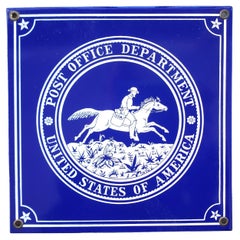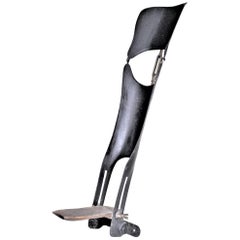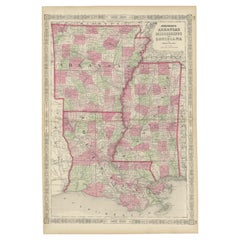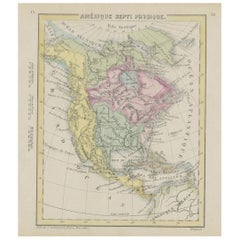Cut Steel Historical Memorabilia
to
2
1
1
1
507
873
416
359
221
2
2
2
2
2
Material: Cut Steel
Vintage United States Post Office Department Enamel Advertising Sign
Located in Hamilton, Ontario
This vintage metal sign has no maker's marks, but presumed to have originated from the United States and dates to approximately 1976 and done in a ...
Category
Mid-20th Century American American Colonial Cut Steel Historical Memorabilia
Materials
Brass, Cut Steel
Antique Civil War Era Leg Brace or Splint with Metal, Brass & Wood Construction
Located in Hamilton, Ontario
This antique Civil War era primitive leg brace or splint is unsigned, but presumed to have been made in the United States in circa 1860. The brac...
Category
Mid-19th Century American Primitive Antique Cut Steel Historical Memorabilia
Materials
Brass, Cut Steel
Related Items
Rare 1864 Civil War Era Map of Arkansas, Mississippi, and Louisiana
Located in Langweer, NL
Title: Rare 1864 Civil War Era Map of Arkansas, Mississippi, and Louisiana
Description: This captivating antique map, titled "Johnson's Arkansas, Mississippi, and Louisiana," was pu...
Category
1860s Antique Cut Steel Historical Memorabilia
Materials
Paper
Small Map of the United States
Located in Langweer, NL
Antique map titled 'Amérique septe. Physique'. Small map of the United States. lithographed by C. Callewaert brothers in Brussels circa 1870.
Category
Mid-19th Century Antique Cut Steel Historical Memorabilia
Materials
Paper
Pair Confederate Civil War Cast Iron Cannonballs with Century Ormolu Mounts
Located in West Palm Beach, FL
Pair of Confederate Civil War Cast Iron Cannonballs with Century Ormolu Mounts,* United States, Circa 1861–1863
*This offering consists of four pieces, two cannonballs, and two peri...
Category
Mid-19th Century American Industrial Antique Cut Steel Historical Memorabilia
Materials
Iron, Ormolu
$2,850 / set
H 4.25 in Dm 3.75 in
SS United States Sign Notice and Information for Passengers
Located in Hanover, MA
Hefty enameled solid aluminum framed passenger safety and information sign from Passenger Stateroom 139 on the Main deck of the SS United States.
Fo...
Category
1950s American Mid-Century Modern Vintage Cut Steel Historical Memorabilia
Materials
Aluminum
Antique Map of The United States of North America, Pacific States, 1882
Located in Langweer, NL
The map is from the same 1882 Blackie Atlas and focuses on the Pacific States of the United States of America during that period. Here are some details and historical context about t...
Category
1880s Antique Cut Steel Historical Memorabilia
Materials
Paper
$239 Sale Price
20% Off
H 14.97 in W 11.03 in D 0 in
Antique Map of the United States by Balbi '1847'
Located in Langweer, NL
Antique map titled 'Etats-Unis'. Original antique map of the United States. This map originates from 'Abrégé de Géographie (..)' by Ad...
Category
Mid-19th Century Antique Cut Steel Historical Memorabilia
Materials
Paper
$191 Sale Price
20% Off
H 9.06 in W 11.23 in D 0.02 in
Antique Map of the United States by Titus '1871'
Located in Langweer, NL
Antique map titled 'The United States of America'. Original antique map of the United States. This map originates from 'Atlas of Prebl...
Category
Late 19th Century Antique Cut Steel Historical Memorabilia
Materials
Paper
$766 Sale Price
20% Off
H 16.54 in W 26.78 in D 0.02 in
Antique Civil War Binoculars, Used by Col. Francis L. Lee
Located in Colorado Springs, CO
Presented is an original pair of Civil War-used binoculars, with their original leather carrying case. The binoculars were used by Colonel Francis L. Lee of Massachusetts during the ...
Category
1860s Unknown Antique Cut Steel Historical Memorabilia
Materials
Brass
Rare 1864 Civil War Era Map of Michigan and Wisconsin with Great Lakes Detail
Located in Langweer, NL
Title: Rare 1864 Civil War Era Map of Michigan and Wisconsin with Great Lakes Detail
Description: This beautifully crafted antique map, titled "Johnson's Michigan and Wisconsin," wa...
Category
1860s Antique Cut Steel Historical Memorabilia
Materials
Paper
$431
H 18 in W 26.38 in D 0.01 in
Rare 1864 Civil War Era Map of Massachusetts, Connecticut, and Rhode Island
Located in Langweer, NL
Title: Rare 1864 Civil War Era Map of Massachusetts, Connecticut, and Rhode Island
Description: This exquisite antique map, titled "Johnson's Massachusetts, Connecticut, and Rhode I...
Category
1860s Antique Cut Steel Historical Memorabilia
Materials
Paper
$431
H 18 in W 26.38 in D 0.01 in
"Air Mail" Coin Bank, Rare, World War II-Era Metal Bank, British Art Deco
Located in Philadelphia, PA
This extremely rare example of World War II-era Art Deco/Moderne design, produced by the Chad Valley Company in England, served as a coin bank, with a slot on one side to accept coins by young men and women motivated to save their pennies. The painted metal bank...
Category
1940s British Art Deco Vintage Cut Steel Historical Memorabilia
Materials
Metal
United States Yacht Ensign Flag in Shadowbox Frame
Located in Norwell, MA
Yacht ensign on wood pole and three black and white yacht photographs mounted into a shadowbox frame. The flag has an embroidered anchor and thirteen flags in the blue field. Flag is...
Category
1960s North American Vintage Cut Steel Historical Memorabilia
Materials
Cotton
Recently Viewed
View AllMore Ways To Browse
John Quincy Adams
Judges Gavel
Mt Vernon Antique Furniture
Pub Memorabilia
Antique Magic Lantern Glass Slide
Antique Voting Box
Antique Wooden Cash Register
Artillery Vase
Emancipation Proclamation
Magic Lantern Slides
The Beatles Memorabilia
The Federalist Antiques
Used Vornado Fan
Vintage Christmas Tree Toppers
Vornado Fan
Ww1 Memorabilia
Ww2 Binoculars
Absinthe Set



